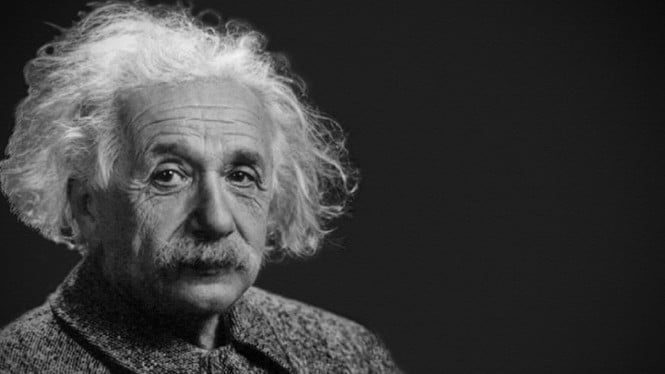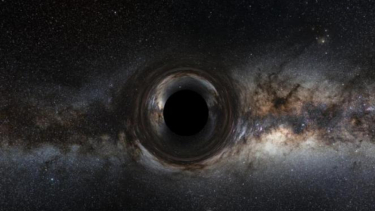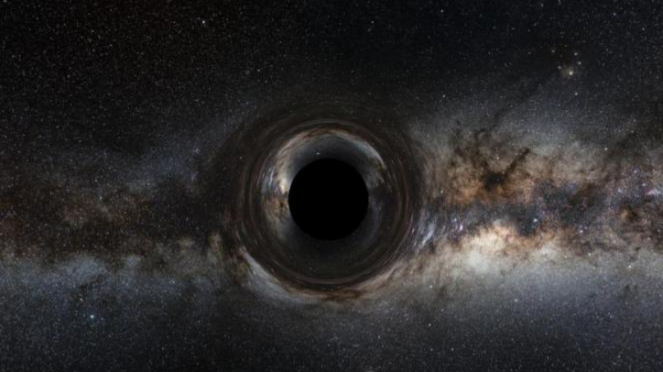List of Proven and Unproven Predictions by Albert Einstein
- U-Report
VIVA – The scientist from Germany, Albert Einstein, was famous for his extraordinary intelligence. Although he has passed away, his discoveries are very meaningful to scientists and even society in this century.
Albert Einstein is known to have fallen in love with math and physics since he was young, even when he was 12 years old, he was able to study Euclide's algebra and geometry and managed to prove the truth of Pythagorean theorem.
As quoted from the Earthly Mission website on Monday, December 5, 2022, here are Albert Einstein's predictions that proven and not:
1. Gravitational Lens
Lensa Gravitasi
- NASA
A gravitational lens is a collection of matter (such as a group of galaxies) between a distant light source and an observer that can deflect light from the source as it moves toward the observer.
Unlike optical lenses, gravitational lenses produce maximum deflection of light passing closest to its center and minimum deflection of light moving farthest from its center. As a result, gravitational lenses do not have a single focal point but only focal lines.
2. Gravitational Waves
Gelombang gravitasi
- Vimeo
A gravitational wave is a disturbance in the curvature of spacetime produced by accelerated mass, which propagates as a wave outward from its source at the speed of light. It transports energy as gravitational radiation, a form of radiant energy similar to electromagnetic radiation.
3. Dilation of Time
Albert Einstein
- Getty Images
It is the difference in the elapsed time measured by two clocks, either because they have relative speeds to each other or because there is a difference in gravitational potential between their locations.
After compensating for the varying signal delay due to the change in distance between the observer and the moving clock (such as the Doppler effect), the observer will measure whether the moving clock was ticking slower than clock at rest in the observer's frame of reference.
A clock is close to a massive object (and therefore has a lower gravitational potential) will record less elapsed time than a clock that is located further away from the massive object (and which has a higher gravitational potential).
4. Black Hole
Black hole.
- U-Report
A black hole is a region of spacetime that exhibits such a strong gravitational acceleration that no particles or even electromagnetic radiation such as light can escape it. The general theory of relativity predicts that a sufficiently dense mass can deform spacetime into a black hole.
The boundary of the region from which it is impossible to escape is called the event horizon. Although the event horizon has an enormous effect on the fate and state of objects that pass through it, there seem to be no locally detectable features that can be observed. In many ways, a black hole acts like an ideal black body as it does not reflect light.
The Unproven Predictions:
White Hole
White hole, lubang putih yang melontarkan material di alam semesta
- dvice.com
Albert Einstein described white holes as "time reversals" of black holes. A black hole record played backward like a bouncing ball is a time reversal of a falling ball.
While the event horizon of a black hole is a ball of no return and the event horizon of a white hole is an unacceptable boundary where no spacecraft can reach the edge of the region. Objects inside a white hole can come out and interact with the outside world. But since nothing could enter, the interior is cut off from the universe's past. No outside events will affect its interior.
Although information and evidence regarding white holes remain inconclusive, GRB 060614 2006, has been proposed as the first documented observation of a white hole.
Wormhole
Ilustrasi lubang cacing
- www.pixabay.com/Genty
It is a speculative structure connecting different points in spacetime that is based on a special solution of Einstein's field equations. Wormholes can be visualized as tunnels with two ends at separate points in spacetime (ex: different locations, different points in time, or both).
Wormholes are consistent with the general theory of relativity, but it remains to be seen if they exist. It can connect vast distances such as a billion light years or more, and short distances such as a few meters, different universe, or different points in time.





































